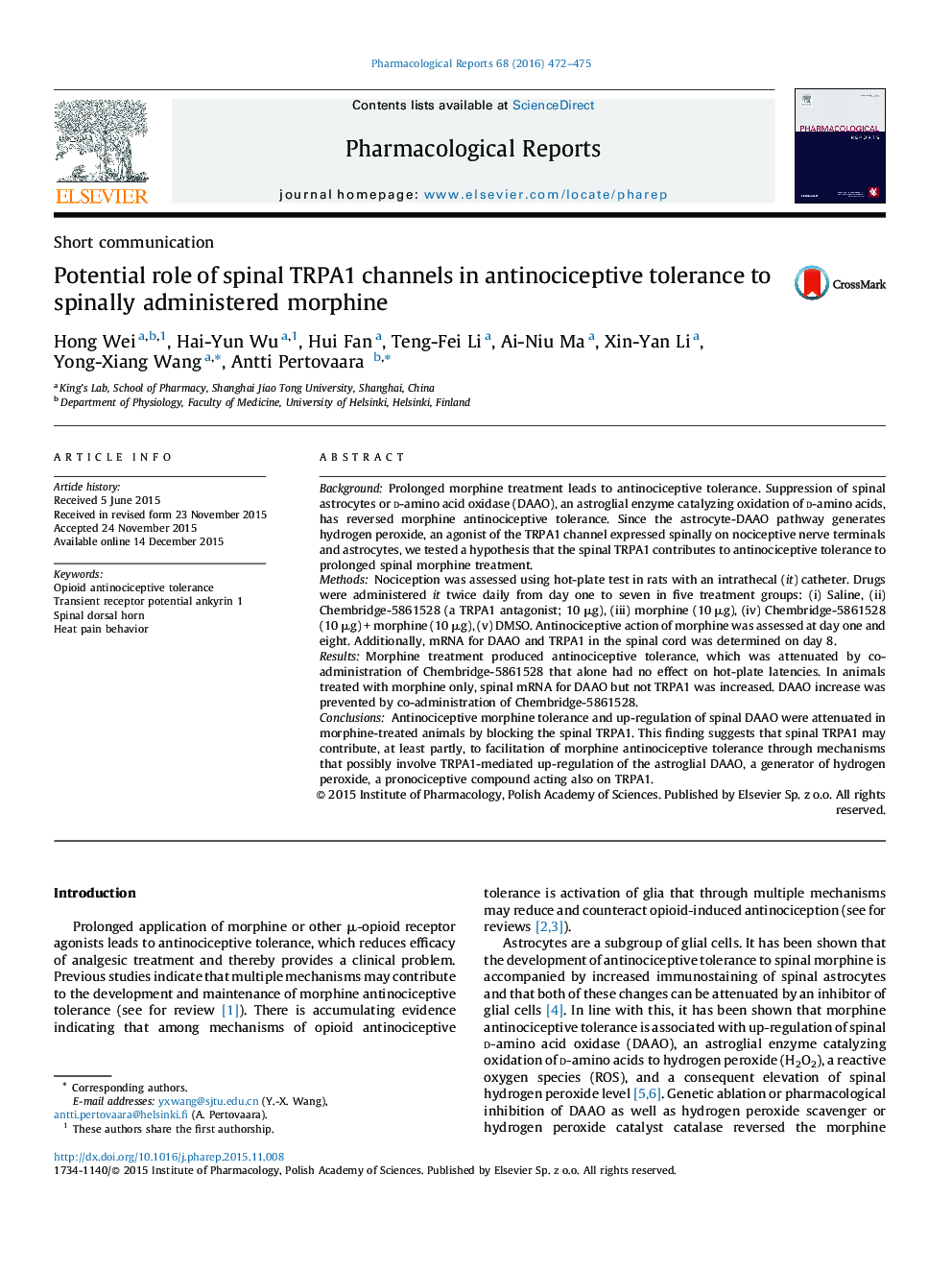| Article ID | Journal | Published Year | Pages | File Type |
|---|---|---|---|---|
| 2011659 | Pharmacological Reports | 2016 | 4 Pages |
BackgroundProlonged morphine treatment leads to antinociceptive tolerance. Suppression of spinal astrocytes or d-amino acid oxidase (DAAO), an astroglial enzyme catalyzing oxidation of d-amino acids, has reversed morphine antinociceptive tolerance. Since the astrocyte-DAAO pathway generates hydrogen peroxide, an agonist of the TRPA1 channel expressed spinally on nociceptive nerve terminals and astrocytes, we tested a hypothesis that the spinal TRPA1 contributes to antinociceptive tolerance to prolonged spinal morphine treatment.MethodsNociception was assessed using hot-plate test in rats with an intrathecal (it) catheter. Drugs were administered it twice daily from day one to seven in five treatment groups: (i) Saline, (ii) Chembridge-5861528 (a TRPA1 antagonist; 10 μg), (iii) morphine (10 μg), (iv) Chembridge-5861528 (10 μg) + morphine (10 μg), (v) DMSO. Antinociceptive action of morphine was assessed at day one and eight. Additionally, mRNA for DAAO and TRPA1 in the spinal cord was determined on day 8.ResultsMorphine treatment produced antinociceptive tolerance, which was attenuated by co-administration of Chembridge-5861528 that alone had no effect on hot-plate latencies. In animals treated with morphine only, spinal mRNA for DAAO but not TRPA1 was increased. DAAO increase was prevented by co-administration of Chembridge-5861528.ConclusionsAntinociceptive morphine tolerance and up-regulation of spinal DAAO were attenuated in morphine-treated animals by blocking the spinal TRPA1. This finding suggests that spinal TRPA1 may contribute, at least partly, to facilitation of morphine antinociceptive tolerance through mechanisms that possibly involve TRPA1-mediated up-regulation of the astroglial DAAO, a generator of hydrogen peroxide, a pronociceptive compound acting also on TRPA1.
